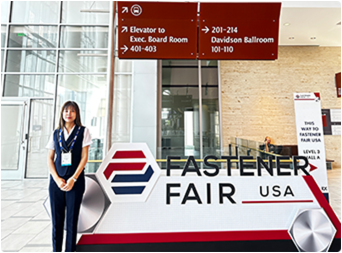dec. . 24, 2024 19:50 Back to list
large threaded rod
Understanding Large Threaded Rods Essential Components in Engineering and Construction
Large threaded rods are critical components widely used in various industries, particularly in construction and engineering. These robust fasteners play a significant role in ensuring structural integrity and reliability in numerous applications. This article delves into what large threaded rods are, their manufacturing process, applications, and advantages.
What are Large Threaded Rods?
A large threaded rod is a long, cylindrical rod made from metal, typically steel or stainless steel, and features continuous helical grooves or threads running its entire length. These threads allow the rod to be easily fastened into nuts or other threaded components. The diameter of these rods can vary significantly, often ranging from a quarter of an inch to several inches, while their lengths can extend up to several feet, depending on the requirements of the application.
Manufacturing Process
The manufacturing of large threaded rods involves several steps to ensure strength and durability. The process typically begins with selecting high-quality raw materials, often high-carbon steel or alloy steel, to provide the necessary tensile strength. The selected material is then heated and drawn into rod form, which is followed by machining processes that cut the material to the desired length. The threads are formed using either die or rolling processes.
Once the threaded rod is formed, it often undergoes various treatments such as heat treatment, galvanizing, or coating to improve corrosion resistance and overall durability. This treatment process is essential, especially for rods that will be exposed to harsh environmental conditions.
Applications of Large Threaded Rods
Large threaded rods have a diverse range of applications across several industries. In the construction sector, they are commonly used to anchor structures, secure steel beams, and facilitate the assembly of large structures. For instance, they are integral in the construction of bridges, skyscrapers, and industrial buildings.
large threaded rod

In the manufacturing and automotive industries, large threaded rods are employed in machine assembly and as components in heavy-duty machinery. They are also prevalent in the design of scaffolding systems, where they provide the necessary support and stability.
Moreover, in the energy sector, particularly in wind and solar energy, large threaded rods are used in the mounting structures of turbines and solar panels, ensuring they remain secure against wind and other environmental pressures.
Advantages of Using Large Threaded Rods
The use of large threaded rods presents several advantages. First and foremost, their high tensile strength makes them suitable for heavy-duty applications. They can withstand significant loads and stresses, making them reliable fasteners in critical structural applications.
Additionally, large threaded rods offer versatility; they can be customized in terms of length, diameter, and thread specifications to meet specific project requirements. Their ease of installation is another significant benefit, as they can be quickly and efficiently secured with nuts and washers.
Furthermore, the durability provided by proper material selection and treatment processes ensures that these rods can withstand harsh environmental conditions, reducing maintenance needs and significantly extending the lifespan of structures and machinery.
Conclusion
In summary, large threaded rods are indispensable components in modern engineering and construction. Their robust construction, versatility, and ability to bear significant loads make them essential for a variety of applications. Understanding their properties and functions enables engineers and builders to utilize these fasteners effectively, ensuring the stability and longevity of structures worldwide. As industries continue to innovate, the demand for large threaded rods is likely to grow, affirming their vital role in the future of construction and manufacturing.
-
The Ubiquitous Reach of DIN934 in Application Realms
NewsMay.16,2025
-
Exploring Different Bolt Types
NewsMay.16,2025
-
Cracking the Code of Sleeve Anchor Mastery
NewsMay.16,2025
-
Clamp Design Principles,Types and Innovations
NewsMay.16,2025
-
Artistry Inspired by the Humble Anchor Bolt
NewsMay.16,2025
-
A Deep Dive into Screw Types
NewsMay.16,2025


